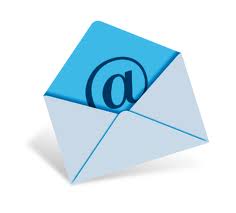
It’s quite difficult to imagine that when I worked in an ad agency in London in 1991 there was no e-mail system.
Although email was invented in 1971 and the first email system saw the light in 1980, by 1990 many businesses had still not adopted it.
For the account management team, the up-side of not having email was that business was a lot more personal. As the account manager you’d speak to your client daily by phone and have more frequent face to face meetings. This fluidity of communication made for the basis of a strong relationship.
Today the idea of not having email is quite absurd. Email is a wonderful tool that has made communication immediate and specific, however in your customer service role it still should be treated with care.
Here are some of the key watch points to consider when you’re dealing with clients via email:
1. Don’t hide behind email
Never use email as a substitute for a conversation. Ensure you mix up the ways you communicate. Even if your client is often unavailable to speak, make sure you call and if necessary leave a message and follow up with an email.
2. Get the tone right
When writing an email you may inadvertently come across as blunt or sarcastic. Therefore always re-read your email to check you are using a polite and friendly tone. If possible start with a short acknowledgement of the last interaction you had, preferably something personal that you picked up during a conversation e.g. “Hope you had a good weekend in the country” or “I hope you enjoyed your holiday in South Africa” etc. This sets a more positive tone for the email.
3. Keep it short
Always keep emails short and to the point. Email shouldn’t be a substitute for a project status report. If you find that your email is starting to go on too long, put the detail into a status report and then write a couple of lines on the email referring the client to the attached document for more detail.
4. Top and tail the email
Choosing how you begin an email depends on the type of relationship you have with the client and indeed how they choose to address you too. For example, if the client addresses you in their email as “Hi Chris”, then you can assume that it’s appropriate for you to do the same. If the client uses “Dear Stephen”, then respond with the same use of “Dear”.
Although it’s obvious where an email has come from, ensure you finish the email with “Kind regards”, “Best regards”, “All the best” or similar and your name. Include all your contact details below your name to make it easier for the client to call you.
5. Activate out of office to keep your client informed of your availability
To help you manage your own time, decide when you’re going to be looking at emails and if it’s clear you will not be available for at least half a day, activate an ‘out of office’ automatic reply on your email system informing your client when they can expect to receive a response. Always include a telephone number so that they have the option on calling you directly.
6. Acknowledge receipt if you’re not ready to answer
When you receive an email from a client that requires you to do some investigating before you can respond, either call the client to let them know you’re working on it or send an acknowledgement email.
The client may let you know when they need the information by but to be doubly sure always mention how much time you will take and check this meets with the their expectations.
7. Use of ‘reply to all’ field
People’s inboxes are full enough, they likely don’t need to see every detail of your conversations with others.
If you are sending a mailing or want many people to see the message, use the BCC field or use a mail merge function. No one wants to see their email address listed with dozens of others and having their email address on public display. This can erode trust.
8. Change the email heading
Avoid lengthening interaction by email and going back and forth. When this is unavoidable, update the subject field to something that is relevant.
Can you think of any other things that are important for account managers to consider when dealing with clients via email? Please leave a comment in the box below.

